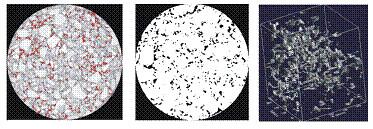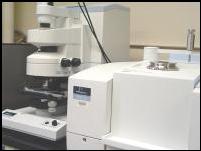
|
ASPHALT RESEARCH CONSORTIUM |
|
An FHWA Research Program Comprising Western Research Institute, Texas A&M University, University of Wisconsin-Madison, University of Nevada-Reno and Advanced Asphalt Technologies. |
|
Asphalt Research Correspondent |
|
The Asphalt Research Consortium is a group of five organizations bringing an unprecedented depth and range of asphalt pavements experience to bear on the needs of the asphalt pavement community.† The participants are Western Research Institute (lead organization), Texas A&M University, University of Wisconsin-Madison, University of Nevada-Reno, and Advanced Asphalt Technologies, with direction from the Federal Highway Administration (FHWA) and input from the Binder, Mixture and Construction, and Models Expert Task Groups. This ambitious team effort aims to accelerate progress in addressing key asphalt pavement performance issues. The return on the research investment will be both fundamental and applied.† The fundamental deliverables will be a clearer understanding of asphalt failure modes and validated models that predict pavement perform- Engineered paving materials (EPMs) are a prominent aspect of the Consortiumís research.† These are modified asphalt paving mixtures developed for specific performance-related purposes, such as increased fatigue, moisture or rut-resistance or resistance to thermal cracking and aging. The process of developing EPMs requires an expanded understanding of the engineering properties of the constituent materials. Stakeholder communications are integral to the Asphalt Research Consortium approach.† Workshops and symposia are planned, and the ARC will use publications, the internet, and Expert Task Group reviews to share results and garner feedback.† In fact, this Asphalt Research Correspondent newsletter is an initial effort to reach out to the asphalt research community.† Please visit us at the Asphalt Research Consortium website hosted by University of Nevada-Reno. |
|
What Is the Asphalt Research Consortium? |
|
Vol 1† Issue 1† December 2007 |

|
Leading the efforts of the Asphalt Research Consortium are Mr. Michael Harnsberger, ARC Program Manager, Western Research Institute; Dr. Hussain Bahia, University of Wisconsin-Madison; Dr. Dallas Little, Texas A&M University; Dr. Peter Sebaaly, University of Nevada-Reno; Dr. Ramon Bonaquist, Advanced Asphalt Technologies; and Dr. Raymond Robertson, Western Research Institute.† |

|
Western Research Institute (Lead Contractor) |
|
The Consortium research team at Western Research Institute in Laramie, Wyoming, is composed of 21 chemists, engineers, technicians and support staff.† Western Research Institute serves as the lead contractor and conducts research activities for the ARC in the areas of validation, moisture damage, engineered materials and fatigue damage.† Mr. Michael Harnsberger is the program manager.† Dr. Raymond Robertson is the WRI vice president for the Transportation Technology Business Unit.
WRI works with state highway departments and other public road agencies to design and build field validation sites to determine performance variations among asphalts and modified asphalts, which are directly attributable to the binder.† Typical sites are constructed with the only significant variable is the crude oil source used to produce the asphalt.† Asphalt PG, design, traffic and other variables are held as constant as possible.† Asphalt, aggregate, and loose mix are sampled at the time of construction and cores are taken from each section of the new road.† Distress surveys are conducted periodically up to approximately seven years.† Numerous analyses are performed on the original asphalt, and the data are compared with the observed performance in the validation site road sections.† This allows correlation of compositional features of various asphalts with their observed performance. Fatigue Damage The WRI teamís efforts in the area of fatigue damage are two-fold.† WRI will employ atomic force microscopy to observe weak points in asphalt at the nano scale.† These are points where cracks originate, and WRI will relate the AFM data to readily obtainable compositional data.† WRI will also seek to improve the aging model of the Mechanistic-Empirical Pavement Design Guide (MEPDG).† The current model used in the MEPDG is fairly general and does not account for aging versus depth.† A model to predict aging vs. depth in pavement is needed for the MEPDG in order to improve the prediction of long-term performance. Moisture Damage One of the primary goals of this program will be to develop a rapid system for matching asphalts, aggregates, and additives that are highly resistant to moisture damage.† Development of this sort of system requires detailed knowledge of the numerous mechanisms by which moisture damage occurs.† Efforts at WRI center on elucidating the root causes of moisture damage, specifically how the chemical characteristics of the materials relate to this damage phenomenon. Engineered Materials WRI is investigating the interaction between recycled and virgin asphalt binder to provide a better understanding applicable to the use of RAP.† In addition, WRI is investigating the extent that phase separation mechanisms of asphalt components contribute to fatigue cracking and healing.† It is anticipated that in 2008, WRI will expand these investigations to include warm mix asphalt. |
|
WRI uses spectroscopy to identify subtle differences in the chemistry of asphalts and to relate how those variations influence performance properties in highways.† WRIís infrared capabilities include conventional Fourier transform infrared (FTIR) microscopy and FTIR with attenuated total reflectance. |

|
The research group from TAMU has expertise in the following areas related to bituminous materials: ∑ Modeling fatigue crack growth, healing, plastic deformation, aging, and moisture-induced damage in asphalt mixtures and pavements ∑ Measurement of material properties that affect the performance of flexible pavements ∑ Quantitative assessment of the performance of asphalt mixtures. |
|
The research team representing Texas A&M University (TAMU) is multi-faceted, with experts from different departments of science and engineering. Prof. Dallas Little from the Other key researchers with expertise in the area of pavement materials are Profs. Robert Lytton, Eyad Masad and Amy Epps Martin from the Department of Civil Engineering, and Dr. Amit Bhasin from the Texas Transportation Institute.† Prof. Charles Glover from the Department of Chemical Engineering and Prof. Bruce Herbert from the Department of Geology and Geochemistry provide interdisciplinary support and expertise in areas related to aging of asphalt binders and geochemistry of aggregates, respectively.† Adding to the teamís strength in computational modeling of asphalt mixtures and flexible pavements are Profs. Richard Kim from North Carolina State University and Yong-Rak Kim from the University of Nebraska.† The majority of the research work undertaken by TAMU is in the areas of fatigue cracking and moisture damage.† The goal of the moisture damage research area is to develop a system by which to accurately predict moisture damage in asphalt pavements due to the cumulative action of the damage mechanisms at different length scales that represent the mixture, mastic and binder-aggregate interface.† The goal of the fatigue cracking research is to produce a system of test methods and models capable of accurately predicting fatigue cracking in asphalt pavement.† This will be accomplished by integrating viscoelastic properties; fracture properties, such as work of cohesion and work of adhesion; healing properties, such as an intrinsic healing function; a representation of the internal structure of the asphalt mixture; and accountability for the effects of aging on these properties in a unified damage model.† |
|
Texas A&M University |
|
3D analysis of void structure in asphalt specimen using x-ray CT. Photo courtesy University of Texas A&M University |